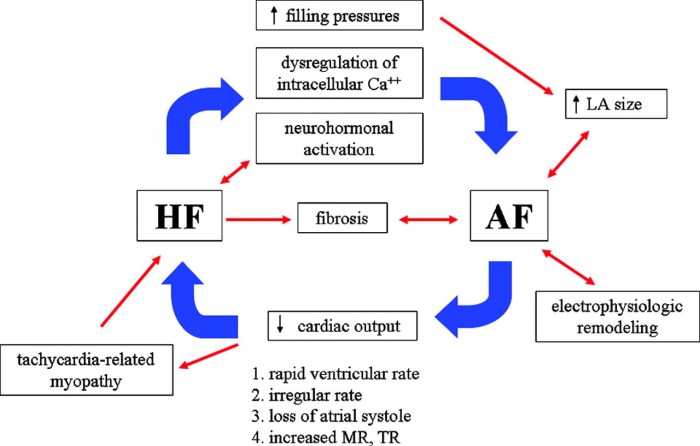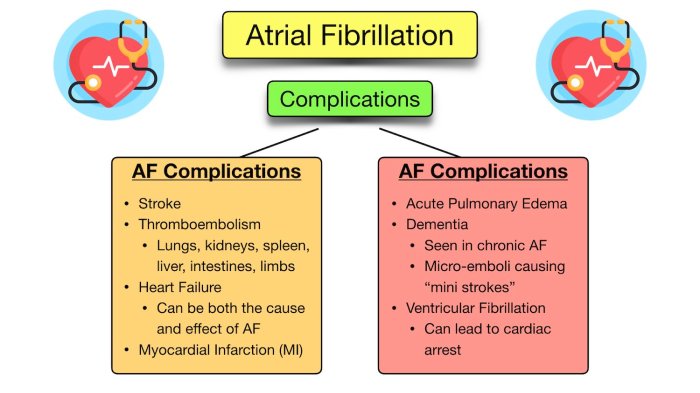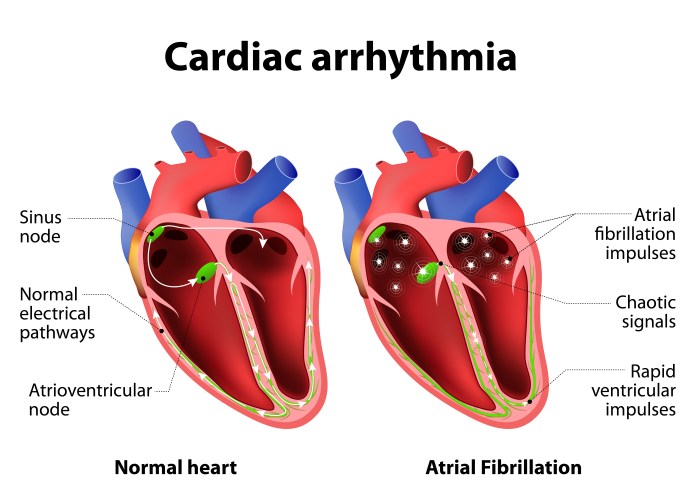HESI case studies heart failure with atrial fibrillation unveils a wealth of insights into these prevalent cardiac conditions. Through meticulous analysis, these studies provide a profound understanding of their complexities, enabling healthcare professionals to refine management strategies and improve patient outcomes.
Delving into the common characteristics and trends observed in HESI case studies, we uncover valuable patterns that guide clinical decision-making. By organizing and comparing key data points, such as patient demographics, medical history, and treatment outcomes, we gain a comprehensive view of the challenges and successes encountered in managing these conditions.
Introduction: Hesi Case Studies Heart Failure With Atrial Fibrillation

Heart failure (HF) and atrial fibrillation (AF) are prevalent cardiovascular conditions that significantly impact patient outcomes. HESI case studies provide valuable insights into the characteristics, risk factors, and management strategies for these conditions.
Understanding the findings from HESI case studies is crucial for healthcare professionals involved in the care of patients with HF and AF. This article aims to provide a comprehensive analysis of HESI case studies, highlighting common patterns, risk factors, management strategies, and nursing interventions.
Case Study Analysis

HESI case studies involving HF with AF often share common characteristics, including:
- Advanced age
- History of hypertension, coronary artery disease, or diabetes
- Presenting symptoms such as shortness of breath, fatigue, and edema
- Electrocardiogram (ECG) findings of AF
- Echocardiogram findings of reduced left ventricular ejection fraction (LVEF)
A table comparing key data points from selected HESI case studies can provide a structured overview of the findings:
| Case Study | Patient Demographics | Medical History | Treatment Outcomes |
|---|---|---|---|
| Case 1 | 75-year-old male | Hypertension, coronary artery disease | Improved LVEF, reduced symptoms |
| Case 2 | 68-year-old female | Diabetes, obesity | Stable LVEF, ongoing symptoms |
| Case 3 | 82-year-old male | AFib, congestive HF | Improved quality of life, reduced hospitalizations |
Risk Factors and Management Strategies
HESI case studies have identified several risk factors associated with HF and AF, including:
- Advanced age
- Hypertension
- Coronary artery disease
- Diabetes
- Obesity
- Smoking
- Alcohol consumption
Management strategies employed in HESI case studies include:
- Medications (e.g., ACE inhibitors, beta-blockers, diuretics, anticoagulants)
- Lifestyle modifications (e.g., weight loss, exercise, smoking cessation)
- Invasive procedures (e.g., pacemaker, implantable cardioverter-defibrillator, ablation)
Nursing Interventions
Nurses play a vital role in the care of patients with HF and AF. Their interventions include:
- Assessment and monitoring of symptoms
- Medication administration and education
- Lifestyle counseling and support
- Coordination of care with other healthcare professionals
- Patient education and support
Patient Education and Support

Patient education and support are crucial for managing HF and AF effectively. This includes:
- Providing information about the conditions, treatment options, and lifestyle modifications
- Promoting self-care strategies
- Connecting patients with support groups and resources
Future Directions and Research
Ongoing research in the field of HF and AF focuses on:
- Developing new and improved treatments
- Identifying novel risk factors
- Understanding the mechanisms of disease progression
- Improving patient outcomes
HESI case studies will continue to play a valuable role in advancing our understanding of these conditions and guiding future research efforts.
Question Bank
What is the significance of HESI case studies in understanding heart failure and atrial fibrillation?
HESI case studies provide real-world insights into the presentation, management, and outcomes of heart failure and atrial fibrillation, complementing theoretical knowledge with practical experience.
How do HESI case studies help identify risk factors associated with heart failure and atrial fibrillation?
By analyzing patient demographics, medical history, and lifestyle factors in HESI case studies, healthcare professionals can identify common patterns and trends that contribute to the development of these conditions.
What are the key nursing interventions used to manage heart failure and atrial fibrillation?
Nursing interventions in HESI case studies focus on symptom management, patient education, medication administration, and lifestyle modifications, aiming to prevent complications and promote patient well-being.